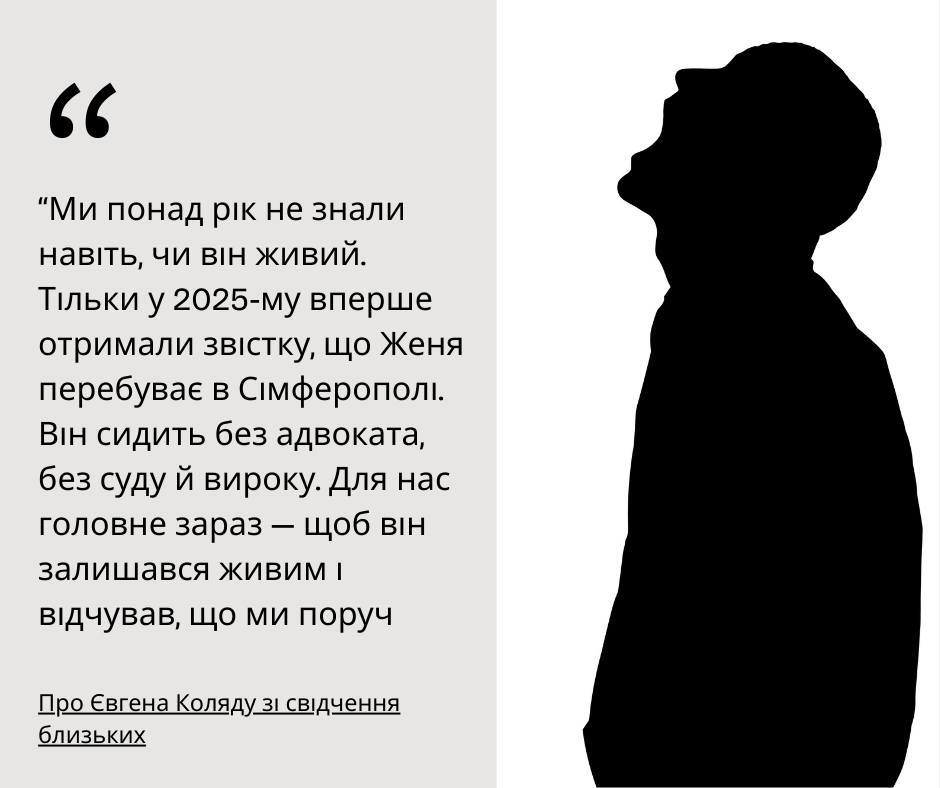

In August 2022, Russian occupiers kidnapped Yevhen Kolyada, a resident of the city of Energodar, Zaporizhia region, who was only 25 years old at the time. The man was taken directly from his parents' house in the city of Kamyanka-Dniprovska, without explaining any reasons. Along with him that day, the occupiers took away several other local boys.
Immediately after the detention, the family tried to find out about his fate - they turned to the commandant's office and other occupation structures, but each time they received only excuses. Over time, it became known that Yevhen was first held in the territory of the Vasylivskyi district, later in Melitopol, and in early 2023 he was transferred to the Simferopol pre-trial detention center. For almost a year, the family had no confirmed information about him. Only in 2025 did other former prisoners say that Yevhen was alive and being held in Crimea.
Later, he himself was able to convey the news through a lawyer and acquaintances. He is currently in a pre-trial detention center without legal protection and without official charges. Yevhen worked as a mechanic at a thermal power plant in Energodar. He did not serve in the army due to health reasons, he was a peaceful, non-conflict and friendly person. His family is convinced that his arrest was the result of slander and denunciations, and the very fact of his detention is another evidence of the occupiers' arbitrariness against the civilian population. His relatives tried to send him small parcels of clothes and food and letters. However, they still do not have an official explanation of the reasons for his detention.
The story of Yevhen Kolyada is just one of thousands that confirm the mass nature of forced disappearances and illegal imprisonment of Ukrainian citizens in the temporarily occupied regions. We call on the Ukrainian authorities and international partners to do everything possible to release the Kremlin’s civilian hostages.
This documentation project is supported by the Norwegian Helsinki Committee (NHC). The views and conclusions expressed in this publication are those of the authors and do not necessarily reflect the position of the NHC.